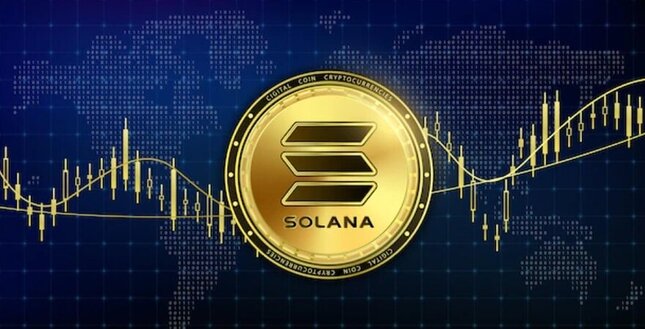The report also found that a transaction on the Solana blockchain uses 24 times less energy than charging your phone.
A transaction on the Solana network takes less energy than two Google searches, and 24 times less energy than charging your phone, according to a Nov. 25 report by the Solana Foundation.
The report states that a single transaction on its network uses 0.00051 kWh, or 1,836 Joules, of energy. According to Google, an average search uses 0.0003 kWh or 1,080 Joules of energy.
Perhaps more surprisingly, the report claims the entire Solana network uses an estimated 3,186,000 kWh per year, which is equivalent to the average electricity usage of 986 American households.
In May, the Solana Foundation contracted Robert Murphy to write the report in order to “frame the environmental impact” of transactions on the Solana network. Murphy is the founder of Othersphere and was formerly an Energy Specialist at the World Bank.
The Solana network is less decentralized than Bitcoin or Ethereum with 1,196 validator nodes that process an estimated 20 million transactions per year. The report states the Foundation will further reduce the network’s energy usage by implementing a program before the end of this year to become carbon-neutral and offset the environmental footprint of the ecosystem. No additional information was provided on whether the network plans to purchase carbon offsets or actually reduce its emissions.
As Solana (SOL) relies on a Proof of Stake consensus mechanism, the network is far less energy intensive than those relying on the Proof of Work mining method such as Bitcoin (BTC) and Ethereum (ETH). Statista estimates that a single BTC transaction uses an average of 4,222,800,000 joules.
It should be noted that networks technically do not use any particular amount of energy for an individual transaction. The energy usage of the network can be the same whether it processes one transaction or one million. However it is often used as a rough, if contested, comparison,
With that in mind, one Ethereum transaction uses about 644,004,000 joules based on the average number of transactions and amount of energy required to run the network. According to Statista, the energy consumption of one ETH transaction is comparable to “more than several thousands of VISA card transactions.”
However Eth2 is expected to use about 99% less energy than the current mainnet following the switch to Proof of take.
Another low-energy alternative is Ripple (XRP), which uses 28,440 Joules per transaction. Ripple says that for every million transactions on its network, the amount of energy used could’ve powered a light bulb for 79,000 hours.
For the same amount of transactions, the energy used by BTC could power a light bulb for 4.51 billion hours. For this reason, Ripple claims that XRP is 57,000 times more efficient than BTC.
Information on these pages contains forward-looking statements that involve risks and uncertainties. Markets and instruments profiled on this page are for informational purposes only and should not in any way come across as a recommendation to buy or sell in these assets. You should do your own thorough research before making any investment decisions. FXStreet does not in any way guarantee that this information is free from mistakes, errors, or material misstatements. It also does not guarantee that this information is of a timely nature. Investing in Open Markets involves a great deal of risk, including the loss of all or a portion of your investment, as well as emotional distress. All risks, losses and costs associated with investing, including total loss of principal, are your responsibility. The views and opinions expressed in this article are those of the authors and do not necessarily reflect the official policy or position of FXStreet nor its advertisers.
Recommended Content
Editors’ Picks

IRS says crypto staking should be taxed in response to lawsuit
The IRS stated that rewards from cryptocurrency staking are taxable upon receipt, according to a Bloomberg report on Monday, which stated the agency rejected a legal argument that sought to delay taxation until such rewards are sold or exchanged.

Solana dominates Bitcoin, Ethereum in price performance and trading volume: Glassnode
Solana is up 6% on Monday following a Glassnode report indicating that SOL has seen more capital increase than Bitcoin and Ethereum. Despite the large gains suggesting a relatively heated market, SOL could still stretch its growth before establishing a top for the cycle.

Ethereum Price Forecast: ETH risks a decline to $3,000 as investors realize increased profits and losses
Ethereum is up 4% on Monday despite increased selling pressure across long-term and short-term holders in the past two days. If whales fail to maintain their recent buy-the-dip attitude, ETH risks a decline below $3,000.

Crypto Today: BTC hits new Trump-era low as Chainlink, HBAR and AAVE lead market recovery
The global cryptocurrency market cap shrank by $500 billion after the Federal Reserve's hawkish statements on December 17. Amid the market crash, Bitcoin price declined 7.2% last week, recording its first weekly timeframe loss since Donald Trump’s re-election.

Bitcoin: 2025 outlook brightens on expectations of US pro-crypto policy
Bitcoin price has surged more than 140% in 2024, reaching the $100K milestone in early December. The rally was driven by the launch of Bitcoin Spot ETFs in January and the reduced supply following the fourth halving event in April.

Best Forex Brokers with Low Spreads
VERIFIED Low spreads are crucial for reducing trading costs. Explore top Forex brokers offering competitive spreads and high leverage. Compare options for EUR/USD, GBP/USD, USD/JPY, and Gold.